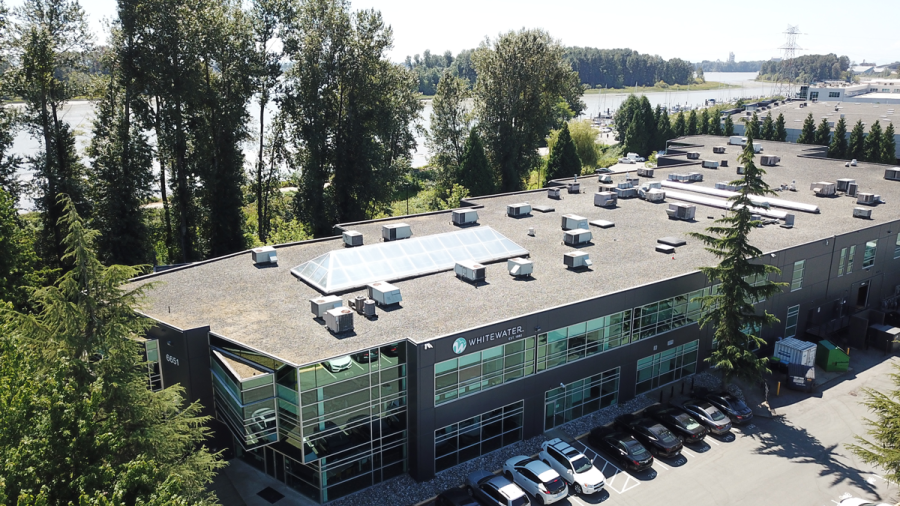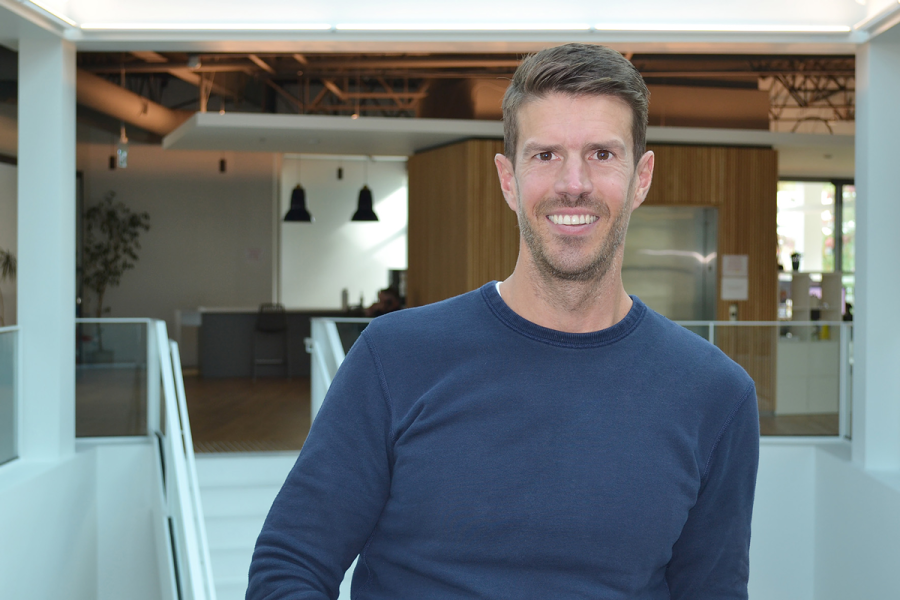
On Dec. 15, 2020, WhiteWater celebrated 40 years as one of the world’s largest water slide designers and manufacturers. In tandem with the milestone, Paul Chutter, son of CEO Geoff Chutter, assumed the role of president at WhiteWater.
Along with the generational change, comes new perspectives on the business, including placing a major focus on the impact of water attractions on the environment.
WhiteWater is initiating a corporate-wide commitment to implementing more sustainable environmental practices for all its operations and products, as well as those of its suppliers, with tangible waste reduction targets in the next 20 years. Simultaneously, the company also invites everyone in the water park industry to join in its sustainability efforts and act on climate change while WhiteWater feels there is still time to do so.
How to Initiate Sustainable Change
This commitment is founded on WhiteWater’s four pillars that make up the company’s Sustainability Scorecard, designed to achieve tangible pollution and waste reduction targets over the next 20 years. The initiative encompasses driving environmentally friendly corporate operations; refining product materials, the manufacturing process, and instituting recycling practices; and developing operational improvements for water parks using WhiteWater water slides and equipment. Progress to implement the Sustainability Scorecard is underway through a number of staff-led committees—each of which is tasked with setting baseline measures, road maps to achieve the goals, and “quick wins” in each of the four areas spanning the company’s current practices and procedures.
In pursuing its Sustainability Strategy, WhiteWater is committing to real end-to-end change in its entire operation, even though doing so will add to the company’s costs.
“Climate change affects all of us, and we have to do something real about it,” says Onno Meeter, WhiteWater’s chief operating officer. “This is why we asked our employees to join us in implementing true sustainability at WhiteWater. Their response was very positive, particularly among our younger staff. They know what’s at stake, and they want to help.”
“At the same time, pursuing sustainability is not new to WhiteWater,” says Paul Chutter. “For instance, reducing energy and water consumption is why WhiteWater developed the IAAPA Brass Ring Award winner Smart Blast powered by Variable Frequency Drives (VFD). These VFD-driven water pumps use a controlling algorithm to provide water or thrust when a raft is present or approaching. Not running the pumps at full when no one is within range halves energy and water usage, benefiting the environment and business alike. That’s the kind of thinking driving our approach to sustainability now.”
The Four Pillars of WhiteWater’s Sustainability Plan
The Four Pillars of WhiteWater’s Sustainability Scorecard are: corporate responsibility, improved manufacturing processes, client collaboration, and social responsibility.
Corporate Responsibility
The corporate responsibility pillar covers WhiteWater’s day-to-day operations. This includes everything from the ways the company operates its buildings and factories, to the materials it uses and disposes of.
“We consider everything in our carbon footprint: from the impact of our trade shows where we use hotel rooms and build booths, to air travel and rental cars for client meetings,” says Emily Colombo, the company’s vice president of strategic partnerships. “We are also looking at ride design and how we can constantly evolve our rides to use even less energy and water while still delivering the fun.”
Of course, being able to make such changes at WhiteWater requires information on how things are being done right now. “This is why we’re doing comprehensive audits throughout the organization,” says Dave Burgess, WhiteWater’s senior manager of product management. “We need to know how we’re doing at the present time so that we can identify opportunities to reduce greenhouse gas emissions and waste generation.”
To improve the company’s corporate practices, WhiteWater plans to meet the ISO 14001 standard for waste reduction and improved environmental management. “To achieve this standard, we need to consider biodegradable and environmentally friendly alternatives for all of our raw materials,” says Katrina Kalashnikova, WhiteWater’s senior project manager. “We need to make our end products truly greener with less impact on the environment.”
Improved Manufacturing Processes
This priority also aligns with the second pillar of improved manufacturing processes.
Given that the company uses fiberglass to manufacture its slides, finding greener ways to make these products is a real challenge. One good start: WhiteWater has already moved to an automated fiberglass resin manufacturing process that uses fewer materials and emits less emissions than the original handmade “open mold” approach.
Improving WhiteWater’s manufacturing processes is no easy feat, especially since “we have committed to cutting the amount of waste we produce in half by 2030, and to a net zero level by 2040,” says Chutter. “We also want to see the same kind of performance in our supply chain. This is why we will work very closely with our suppliers to help them achieve these goals in their own operations.”
In the drive to meet these manufacturing goals, everything is on the table. “Our products need to be environmentally efficient in all respects, from raw materials to energy consumption and end-of-life solutions,” says Kelly Williams, WhiteWater’s product systems manager. “We are looking to minimize all of these impacts; thankfully, it is a mindset already built into our new product development processes.” He cites the redesign of the runout lanes with wave catchers “just because we know it is right to save water.”
Client Collaboration
The third pillar of client collaboration invites WhiteWater’s clients to join the initiative and enact their own sustainability strategies since the company found water parks have just as much interest in addressing climate change as WhiteWater does.
“Our goal is to do our part to help water parks become ‘climate neutral’ through a number of attainable, practical strategies,” says Meeter.
Viable options include installing solar for running kiosks and point-of-sale terminals and investing in technology that helps parks run more efficiently, which is good for the environment and water parks’ bottom lines. Going green requires that customers look at lifetime value costs, not just purchase price in their new ride decision-making. Meanwhile, fiberglass water slides can be made to last for many years if they are properly maintained. And when these do need to be removed and replaced, WhiteWater is exploring innovative end-of-life solutions for reuse and recycling.
Some changes that can help slow climate change can also be fun for guests. A case in point: “We have found that our ‘cause and effect’ water play features—where foot or hand activation turns a water jet or tipper—improve the play value and reduce water usage. And we’ve experimented with increasing the automatic time intervals for tipping buckets in water play zones,” says Colombo. “Not only does it reduce energy usage, but it heightens anticipation among the kids waiting for the water to pour onto their heads!”
Social Responsibility
“To make a meaningful difference in combating climate change, WhiteWater will be contributing 1% of our net corporate profits to nonprofit partners focused on water sustainability soon to be announced,” says Chutter. “We feel that this is an additional lever we can use to help protect the sustainability and health of the planet. Water is at the heart of our business; we love it, and we should protect it.”
Ambitious Change is Urgent
WhiteWater isn’t just inviting water parks to join in its sustainability strategy. The company wants everyone to join—including its competitors.
“We hope that everyone in the industry will focus on increased sustainability too and implement their own effective climate change strategies, as many larger clients are, because they know their customers really care about this” says Meeter. “At the end of the day, this is a shared world. And we all need to make sure that a livable planet is here for future generations.”
As for goals such as net zero waste being too ambitious for profit-making businesses?
“Given the severe climate crisis that we’re experiencing, if the goals aren’t ambitious, then what’s the point?” Chutter asks. “I think we all recognize that time is of the essence. We equally recognize that it is in fact incumbent upon all of us to come up with the solutions. This is why achieving sustainability is an initiative not to be taken lightly, nor can it be achieved in isolation. We’re all in this together. That’s why we all have to address climate change together. That’s what we’re doing at WhiteWater right now, and we hope everyone will join us in doing this.”
To learn more about WhiteWater’s Sustainability Strategy, click here.
This story was made possible by IAAPA partner WhiteWater. It does not necessarily reflect the views of Funworld writers and editors. IAAPA does not endorse any service, company, or product mentioned within.
-
For information on how your company can be featured as IAAPA Sponsored Content, please contact Julie Rice-Witherell at [email protected]



